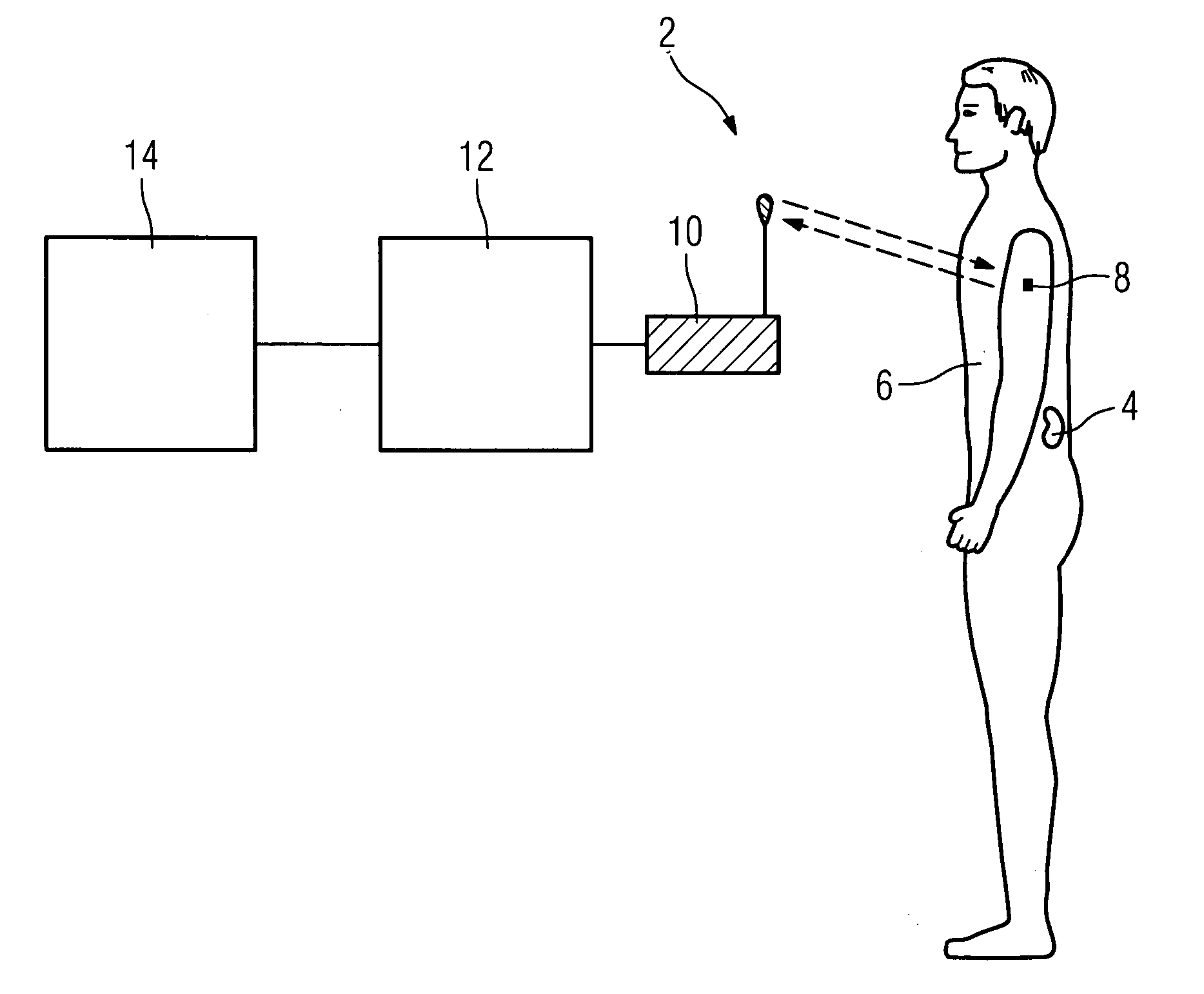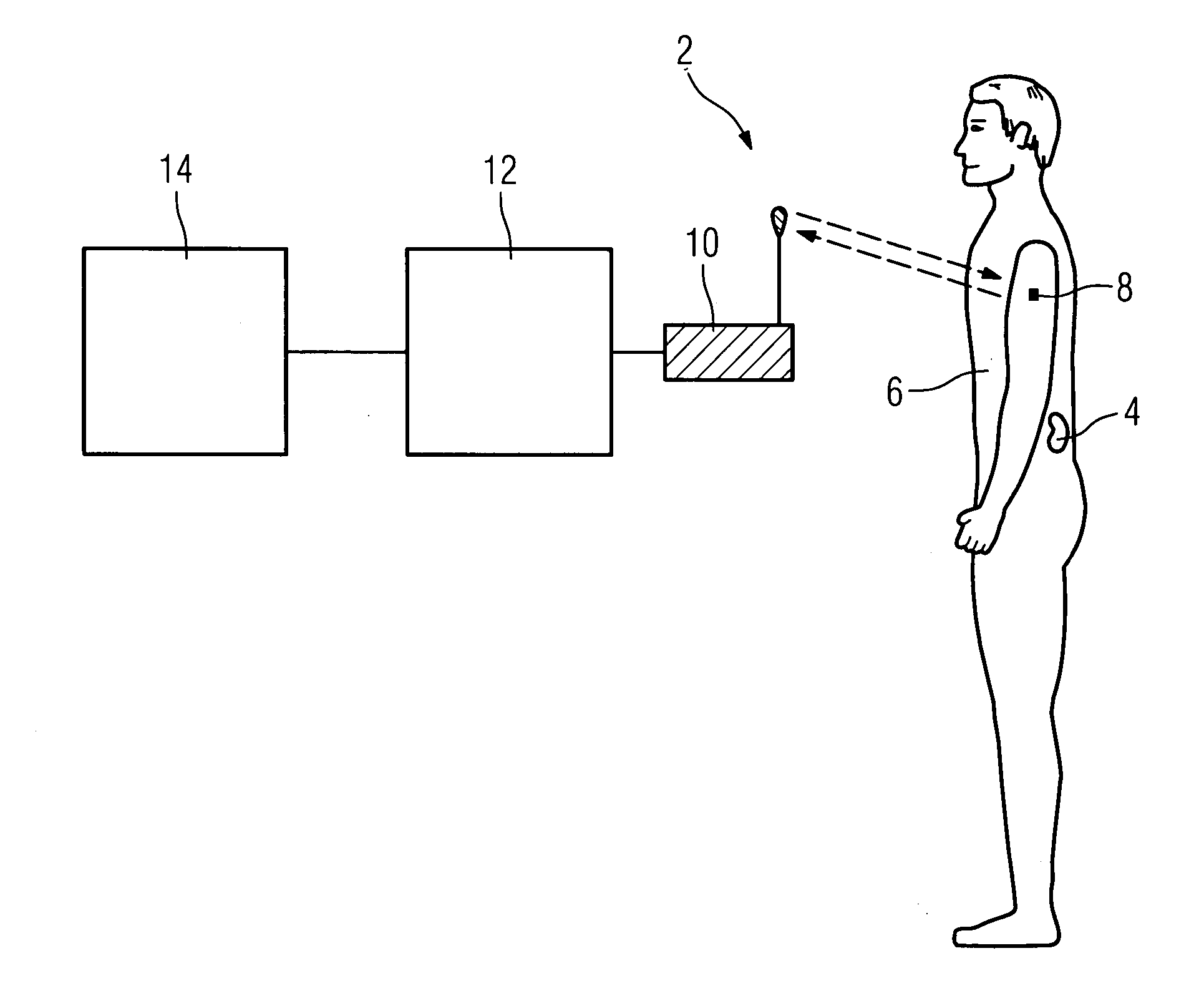Method and system for identification of a medical implant
a technology for medical implants and identification methods, applied in the field of medical implant identification systems, can solve the problems of increasing the cost and size of active rfid transponders, and achieve the effect of quick detection
- Summary
- Abstract
- Description
- Claims
- Application Information
AI Technical Summary
Benefits of technology
Problems solved by technology
Method used
Image
Examples
Embodiment Construction
[0023]The illustration shows a system 2 for identification of medical implants 4 that essentially include an RFID chip 8 and a reading unit 10 inserted in the body of a patient 6. The reading unit 10 is part of a computer-aided evaluation module 12 or is connected with same. The evaluation module 12 is, in particular, an imaging examination device, e.g. an X-ray system fitted with an RFID reading unit 10. When the reading unit 10 receives information on the implant, the data can be used to optimize the settings of the X-ray system 12 to take account of the implant.
[0024]In this exemplary embodiment, the evaluation module 12 is also connected to an information system 14 of the hospital. An electronic record of the patient can thus be automatically called up or created in which data, e.g. regarding the examination, treatment or condition of the patient are stored or are being stored. If the RFID chip 8 is a writeable chip, the information from the information system 14 can be used to ...
PUM
 Login to View More
Login to View More Abstract
Description
Claims
Application Information
 Login to View More
Login to View More - R&D
- Intellectual Property
- Life Sciences
- Materials
- Tech Scout
- Unparalleled Data Quality
- Higher Quality Content
- 60% Fewer Hallucinations
Browse by: Latest US Patents, China's latest patents, Technical Efficacy Thesaurus, Application Domain, Technology Topic, Popular Technical Reports.
© 2025 PatSnap. All rights reserved.Legal|Privacy policy|Modern Slavery Act Transparency Statement|Sitemap|About US| Contact US: help@patsnap.com


